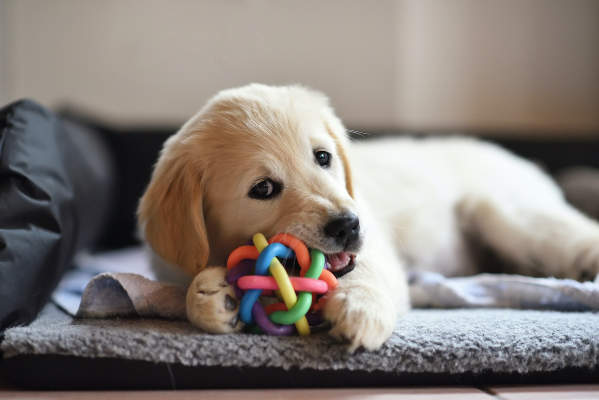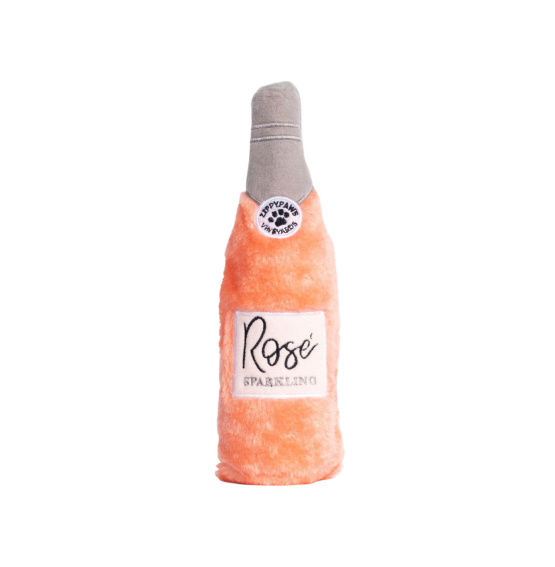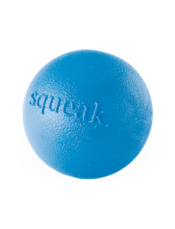Why do some pet toys squeak while others crinkle or jingle? Believe it or not, these pet toy sounds are actually engineered to appeal to your pet's animal instincts. So if you're in the market for a new toy for your four-legged friend, you probably want to consider choosing a toy with a sound they'll definitely engage with. It'll be more fun for both of you!
Deciding what the perfect toy sound for your pet is may seem simple: show your dog or cat the toy and see how they respond. But when you're buying a lot of your cat toys online or shopping in a pet store where your dog can't come along, it gets a bit more difficult. That's why we've put together a guide to what toy sounds pets prefer to help with your next shopping spree.
Choosing The Best Toy Sounds For Your Dog
Dogs tend to favor squeaky toys above all else — and according to Ana Balashova, founder of DogHint.com, a research-driven publication, that's for a reason. "Some recent studies of ancient species' DNA shows that dogs diverged from wolves around 40,000 years ago," she explains. "Driven by those ancient wolves' instincts, modern dogs get excited hearing those squeaky sounds when they bite a thing. It resembles the hunting, the process of catching and killing small prey."
This could also explain why some dogs like to completely demolish squeaky toys, chewing them until they don't squeak anymore. "When the toy squeaks, the pursuing and biting is fun," says Balashova. "After there's no sound feedback from the toy, it's like the prey is dead, and it's time to find another object to hunt for."
Best Toy Sounds For Cats
If you own a cat, you already know their ideal type of play is one that simulates hunting. And according to Dawn LaFontaine, a cat shelter volunteer, cat blogger, foster and founder of Cat in the Box, there's science behind that. "For cats, play is serious business," she says. "They hone their hunting skills through play. Every opportunity they get to pounce, chase, and stalk is a chance for them to engage their natural instincts (and fine-tune their technique) in the important work of trapping and capturing prey."
Which is why cats respond well to toy sounds that add to the realism of the mock-hunting adventure. "The rustling sounds made by some crinkly foil balls might resemble the sound of a chipmunk scurrying through a pile of leaves," says LaFontaine. "Toys that gently squeak when rolled, chewed, or batted might call to mind a captured mouse for your little hunter."
Toys that have little bells on them can also be appealing for cats -- depending on the household environment they live in. "In a household where the family cats wear bells on their collars, bell sounds mean something else," LaFontaine explains. "A bell-containing toy might have less appeal for those cats." And when in doubt, catnip toys always go over well.
Finding The Right Toy For Your Pet
Just like humans, pets have their own individual preferences. As such, Russell Hartstein, certified dog and cat behaviorist says it's best to use a variety of toys with your pet to see what sounds and styles they enjoy engaging with most. "Start with dozens of toys of all different shapes, sizes, smells, textures, sounds, etc. to see what your dog or cat loves and doesn’t," he says. As you introduce each toy to your pet, make sure you're playing along with them to really get a feel for what they're most interested in. "Simply purchasing 100 toys and tossing them on the ground will prove unsuccessful — your dog or cat won't like any of them," says Hartstein.
As a pet owner, you know how your cat or dog reacts when they're afraid or unhappy. While playing with your pet, Hartstein says to make sure you're observing their body language to get a feel for which sounds are pleasing to them, and which are not. "To fully meet the needs of the pet and to make sure they receive optimal care, we must use a variety of toys and stimulation," he says. Figuring out which toys to use is key to your pets happiness, so be sure to experiment with a few different types!



